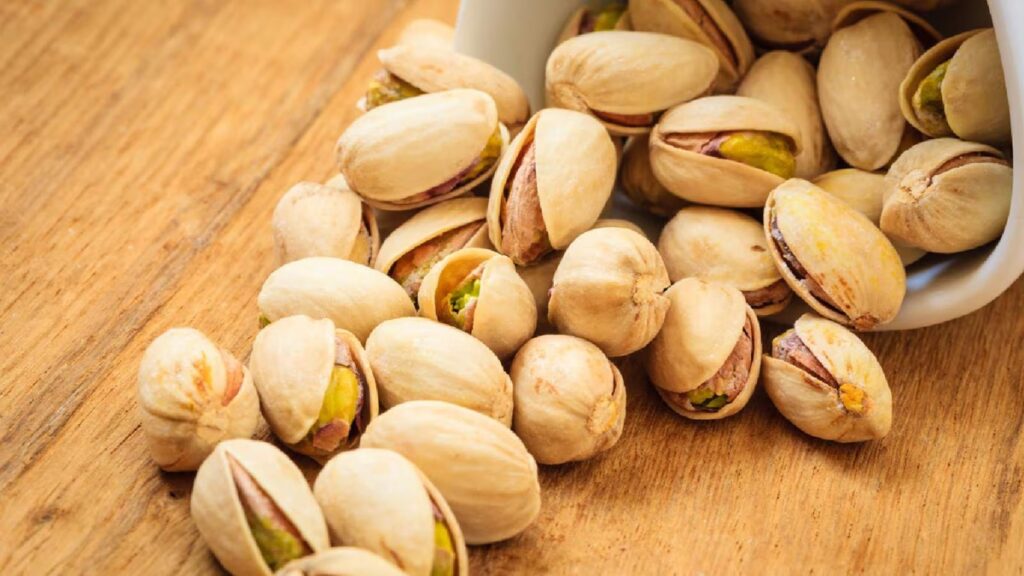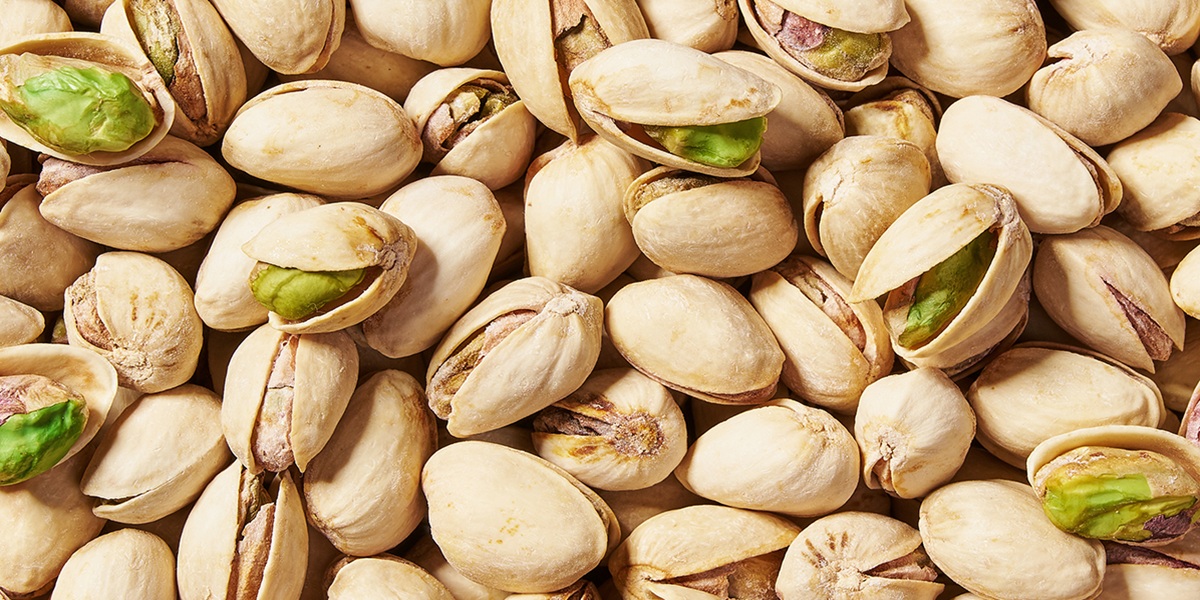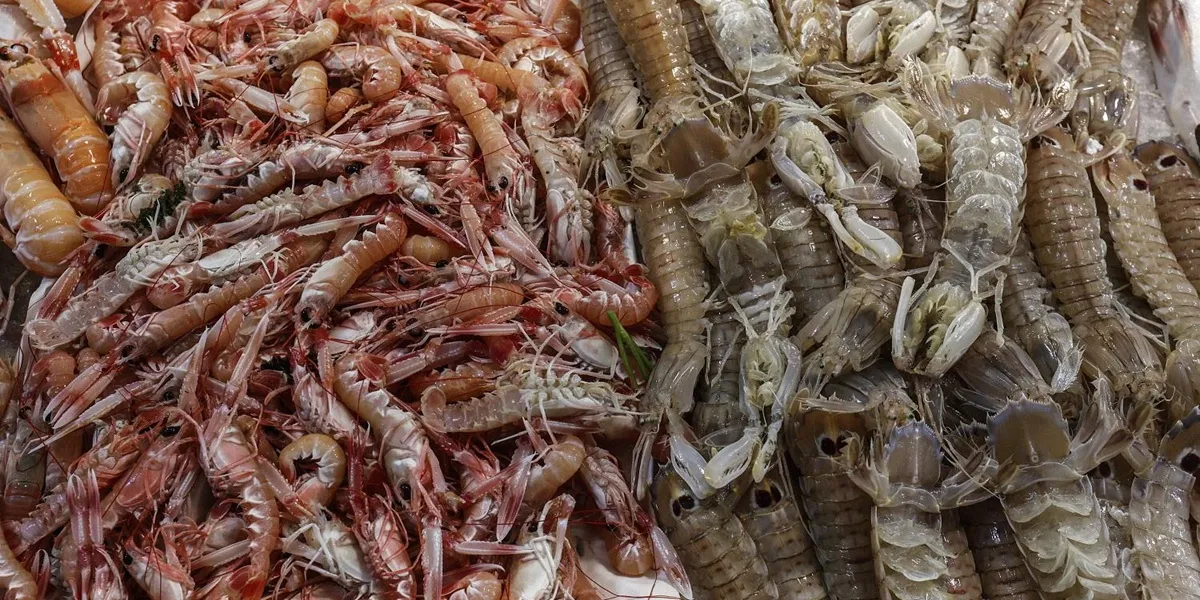Welcome to a journey unlike any other. Somewhere in the heart of New Mexico stands a giant tribute to one of the world’s most beloved nuts—the pistachio. But this isn’t just any pistachio. Towering over 30 feet tall, the World’s Largest Pistachio is not only a quirky roadside attraction but also a celebration of pistachio farming, culture, and craftsmanship. It draws thousands of visitors each year who come not only for the giant nut selfie but also to learn about pistachio varieties, their fascinating properties, and how they shape agriculture in the American Southwest.
In this article, we’ll uncover everything behind this colossal creation. From the real types of pistachios grown nearby to their health benefits, farming techniques, and the story of the man behind the monument—this guide offers more than just fun facts.
Stick around to explore the science, culture, and unique charm of this giant nut and discover why it’s a must-see for travelers and pistachio lovers alike.
A Nut Like No Other: What Is the World’s Largest Pistachio?
Iranian Pistachios: The World’s Favorite Nut
At first glance, the world’s largest pistachio may look like a whimsical roadside attraction—but it’s much more than that. Located at PistachioLand in Alamogordo, New Mexico, this 30-foot-tall sculpture is a tribute to pistachio farming in the region and a creative marketing masterpiece. Built in 2007 in honor of Tom McGinn, the founder of McGinn’s Pistachio Tree Ranch, the nut has become a symbol of innovation, community pride, and agricultural heritage.
But why a pistachio? Because pistachios are central to the economy and identity of southern New Mexico. The area’s arid climate, high elevation, and alkaline soils make it ideal for cultivating this hardy tree nut. The sculpture itself doesn’t represent any one variety, but it honors the many types grown in the area—from Kerman to Golden Hills and beyond. Each of these pistachio cultivars has distinct properties, including size, shell integrity, oil content, and flavor profile.
Beyond its artistic value, the giant pistachio educates visitors about the complexity of pistachio farming. From hand-grafting rootstocks to managing water efficiently and combating pests like the navel orangeworm, growing pistachios is both science and art.
So while it may look like a fun photo op, the world’s largest pistachio actually tells a much deeper story—one of agricultural dedication, botanical wonder, and local pride. Stick with us as we crack open more about this amazing nut.
Where Is the World’s Largest Pistachio Located? Discover the Iconic Spot in New Mexico
The world’s largest pistachio is proudly located at McGinn’s PistachioLand in Alamogordo, a small city nestled in southern New Mexico, USA. Specifically, it can be found at 7320 US Highway 54/70, making it an easy stop for road trippers traveling through the Southwest. With clear signage and plenty of parking space, it’s a destination that welcomes both casual passersby and dedicated pistachio enthusiasts.
What makes this location even more unique is its connection to the local agricultural landscape. Alamogordo is part of the Tularosa Basin, an area with a warm, dry climate and well-drained soil—ideal conditions for pistachio cultivation. The surrounding farms thrive thanks to this microclimate, producing some of the highest quality Pistachios in the U.S.
Visitors to the site not only get to see the 30-foot-tall pistachio sculpture but can also explore PistachioLand, which includes a working pistachio orchard, a vineyard, and a gift shop. There’s even a motorized farm tour that educates guests about the growing and harvesting process.
GPS navigation makes it easy to find, and the landmark is marked on most travel apps. Whether you’re heading north from El Paso, Texas, or east from White Sands National Park, the giant pistachio is well worth the detour.
More than a fun photo opportunity, this location offers a meaningful introduction to pistachio farming in the region. If you’re planning a road trip or exploring the agricultural side of New Mexico, this giant nut is the perfect stop to add to your itinerary.
The Story Behind the Giant Nut: Who Built It and Why?
The towering pistachio at PistachioLand is more than just an oversized sculpture—it’s a heartfelt tribute to a visionary man. Built in 2007, the monument was commissioned by the McGinn family in memory of Tom McGinn, the founder of McGinn’s Pistachio Tree Ranch. Known for his pioneering work in pistachio farming in southern New Mexico, Tom was a driving force in transforming the region into a hub for pistachio cultivation.
After his passing in 2007, Tom’s son, Tim McGinn, wanted to honor his father’s legacy in a bold and unforgettable way. The result was the world’s largest pistachio—crafted from concrete and steel, painted with realistic color tones, and standing a remarkable 30 feet tall. The sculpture was designed by a local artist and fabricated by YESCO, a company known for creating eye-catching signage and roadside attractions.
The decision to build a pistachio wasn’t just symbolic—it reflected Tom’s passion and life’s work. He believed in educating people about the value of agriculture and the beauty of pistachio farming. The sculpture now serves as a physical embodiment of that philosophy, drawing thousands of visitors annually to learn, engage, and appreciate the story behind the nut.
Visitors can even find a commemorative plaque at the base of the sculpture that explains the dedication. The story resonates not only with farmers but also with anyone who values family legacy, innovation, and the entrepreneurial spirit.
Ultimately, the giant pistachio isn’t just about size—it’s about vision, history, and honoring a man who helped shape an entire industry. It stands today as a beacon of pride for Alamogordo and a symbol of what one person’s passion can grow into—quite literally—on a monumental scale.
PistachioLand in Alamogordo: More Than Just a Giant Nut
PistachioLand is much more than a quirky photo stop—it’s a fully immersive agritourism destination. Located in Alamogordo, New Mexico, this family-owned attraction offers visitors a behind-the-scenes look at pistachio farming, nut processing, and even wine production. It’s where education meets entertainment in the heart of the Tularosa Basin.
The centerpiece of PistachioLand is undoubtedly the 30-foot pistachio sculpture, but beyond that lies a working pistachio orchard with over 12,000 trees. Guests can book a motorized farm tour, which offers fascinating insights into how pistachios are grown, irrigated, and harvested. Tour guides explain the lifecycle of pistachio trees, how they’re grafted, and the environmental conditions needed for optimal yield.
One unique feature is the on-site processing facility, where pistachios are cleaned, roasted, and flavored. Visitors get to see this process up close and taste-test a variety of products, from salted and chili-flavored pistachios to chocolate-covered versions. There’s also an extensive gift shop featuring pistachio-based snacks, locally crafted goods, and souvenirs.
In addition to nuts, PistachioLand is home to Arena Blanca Winery, producing wines from estate-grown grapes. Wine tastings are offered daily, creating a one-of-a-kind experience that combines pistachios and vino.
What truly sets PistachioLand apart is its educational value. Each element—from the farm tours to the tasting sessions—is designed to inform guests about sustainable farming, crop science, and New Mexico’s role in American agriculture.
Whether you’re a food enthusiast, a science lover, or a curious traveler, PistachioLand offers something for everyone. It transforms a simple nut into a gateway to learning, tasting, and exploring. It’s a celebration of agriculture, innovation, and the joy of discovery—making it far more than just a stop on the map.
How Big Is It Really? Comparing the Giant Pistachio to Real Pistachios
The size of the world’s largest pistachio is astonishing—even when you know it’s a sculpture. Standing at 30 feet (about 9 meters) tall, it dwarfs not only real pistachios but also most roadside monuments across the country. Built with reinforced concrete and steel, it weighs over 5 tons and features a painted, lifelike shell and kernel to reflect its real-world counterpart.
To put that in perspective, an average pistachio measures just 1 to 2 inches (2.5 to 5 cm) in length. That means the sculpture is roughly 180 times larger than a typical pistachio nut. This exaggerated scale makes it ideal for visibility from the highway and has cemented its place as a beloved roadside attraction.
But this sculpture isn’t just about size—it’s also about accuracy. The details are striking, from the ridges of the shell to the way it slightly opens at the top, mimicking a naturally split pistachio. Designers used reference models of actual pistachios grown at McGinn’s farm to ensure authenticity in the final build.
From a design perspective, it combines artistic craftsmanship with agricultural representation. It’s a giant food sculpture that respects the anatomy of the nut it honors. Visitors often marvel not just at its size but at how realistic it looks up close.
Moreover, the monument provides an opportunity to spark conversations about scale, biology, and the role of pistachios in human nutrition. It’s a fun way to connect casual passersby with deeper questions about food, farming, and science.
So while it’s undeniably huge and great for selfies, the giant pistachio also offers a quirky-yet-serious tribute to a nut that plays a big role in the diets, economies, and ecosystems of the regions where it grows.
Why Visit the Giant Pistachio? Tourism, Education, and Instagram Moments
The world’s largest pistachio isn’t just a roadside oddity—it’s a meaningful travel destination that blends culture, education, and entertainment. For many road trippers and travel bloggers, stopping at the giant nut has become a must-do experience in New Mexico. But beyond the selfie-worthy moment lies a rich opportunity to learn and engage.
First, there’s the educational aspect. PistachioLand offers guided tours that explain how pistachios are cultivated, from the grafting of rootstock to seasonal harvesting. These tours are informative and interactive, ideal for families, students, and anyone interested in sustainable agriculture.
Next, there’s the cultural value. The monument honors the legacy of Tom McGinn and the farming community of Alamogordo. It symbolizes the importance of pistachio farming to the regional economy and introduces visitors to the unique agricultural challenges of growing in the desert.
Of course, no visit would be complete without capturing the moment. The giant pistachio is Instagram-famous, and for good reason. Its bold colors, towering size, and open-sky backdrop make it perfect for eye-catching photos and videos. The site even features designated photo spots and hashtags to help visitors share their experience online.
And there’s more—visitors can enjoy pistachio tastings, shop for locally made products, and even sip on wine from the adjacent vineyard. These sensory experiences make the visit not only informative but also enjoyable and memorable.
Ultimately, the giant pistachio is a clever mix of education and entertainment. It transforms what could be a quick stop into a multi-layered experience where travelers learn about agriculture, support local businesses, and have fun doing it. It’s tourism with purpose, and that’s why thousands return each year.

The Role of Pistachios in New Mexico Agriculture
Pistachios are not just a novelty in New Mexico—they are a vital part of the state’s agricultural economy. The climate of southern New Mexico, especially around Alamogordo, is ideal for pistachio cultivation due to its hot summers, low humidity, and well-drained alkaline soils. These conditions closely mimic the native environment of pistachio trees, which originally come from the Middle East and Central Asia.
Today, New Mexico is the second-largest pistachio-producing state in the U.S., after California. Pistachio farms in the region, such as McGinn’s and Heart of the Desert, grow several key varieties like Kerman, Golden Hills, and Lost Hills. Each has unique growing needs and flavor profiles, contributing to the state’s diverse nut production.
What makes pistachio farming particularly interesting in New Mexico is its reliance on sustainable water practices. Given the region’s arid nature, farmers utilize drip irrigation systems and invest in soil monitoring to ensure efficient water usage. Pistachio trees are also known for their drought resistance, making them a more environmentally friendly crop compared to other nuts.
Beyond farming, pistachios support local economies by creating jobs in agriculture, processing, packaging, and agritourism. Educational tours and direct-to-consumer sales help farms remain profitable and resilient, even in challenging economic conditions.
Pistachio Health Benefits: Why You Should Eat Them Daily
Additionally, pistachios have significant nutritional value—they’re rich in protein, fiber, antioxidants, and healthy fats, making them a popular product in health-conscious markets.
In short, pistachios represent more than just a snack in New Mexico—they’re a sustainable, profitable, and culturally significant crop. From farm to monument, they highlight the intersection of nature, science, and community, reinforcing the idea that even something as small as a nut can have a big impact.
Great! Let’s continue with the 300-word SEO-optimized, coherent, and professionally written texts for headings 8 to 12. After that, I’ll give you the most reliable sources for The World’s Largest Pistachio.
World Records and Pistachios: Is It Really the Biggest in the World?
When it comes to oversized food sculptures, the world’s largest pistachio stands out—not just for its sheer size, but also for its symbolic value. Built at 30 feet tall, this massive structure is widely recognized as the largest pistachio sculpture on Earth. While it may not hold a formal Guinness World Record, it is unofficially acknowledged across tourism platforms and travel blogs as the biggest pistachio monument known globally.
What sets this structure apart is not just its dimensions but its recognition across major travel publications and quirky landmark databases like Roadside America, Atlas Obscura, and Only in Your State. These platforms consistently refer to the giant pistachio as a record-breaking attraction and a must-see in New Mexico.
There are no known competitors or similar sculptures of pistachios reaching anywhere near this size. While other countries are major producers of pistachios—such as Iran, Turkey, and Italy—they don’t have monuments that rival the scale or fame of the Alamogordo nut.
It’s important to note that the giant pistachio is not about competitive record-setting alone. Its primary purpose is commemorative—to honor Tom McGinn’s contribution to local agriculture and to serve as a visual ambassador for pistachio education and tourism.
So, is it officially the largest pistachio in the world? Technically, it may lack a certificate, but practically and culturally, yes—it holds that title in the eyes of visitors and experts alike.
Behind the Scenes: How Was the Giant Pistachio Built?
The creation of the world’s largest pistachio wasn’t just a marketing stunt—it was an engineering and artistic endeavor rooted in tribute. Commissioned in 2007 by the McGinn family in memory of Tom McGinn, the sculpture was designed and constructed by YESCO, a company renowned for fabricating custom signage and themed structures.
The giant pistachio is made of steel and concrete, materials chosen for their durability and ability to withstand harsh desert climates. Standing at 30 feet tall and weighing over 5 tons, it required a strong internal framework, similar to what you might find in large-scale architecture. The surface is coated in weather-resistant paint, carefully chosen to match the real pistachio’s distinct green, beige, and natural hues.
To ensure authenticity, the design was modeled after actual pistachios grown at the ranch. Artists studied the shell structure, the slight natural opening, and the inner nut to capture every detail. The result is a highly realistic sculpture that both educates and entertains.
The installation process took several weeks, involving concrete pouring, steel framework assembly, and precision painting. Today, the sculpture is anchored securely near the PistachioLand entrance, where it greets visitors and serves as a proud symbol of both local craftsmanship and agricultural pride.
While the structure itself is impressive, what makes it even more meaningful is the story behind it—a tribute to a man who dedicated his life to sustainable farming and community development. The giant pistachio stands as a fusion of art, agriculture, and memory.
Souvenirs, Tours, and Tastings: What You Can Do at PistachioLand
PistachioLand offers more than just a glimpse of a giant nut—it’s a full-fledged visitor experience. The attraction is designed to immerse guests in every aspect of pistachio farming, production, and enjoyment. From hands-on tours to delicious tastings and unique shopping opportunities, there’s something here for every traveler.
One of the most popular experiences is the motorized farm tour. This guided ride takes visitors through the 90-acre pistachio orchard and vineyards, offering insights into how pistachios are planted, irrigated, and harvested. The tour is both educational and scenic, making it ideal for families, students, and anyone interested in sustainable farming.
Next, there’s the tasting counter, where guests can sample an array of pistachio products. From roasted and salted nuts to inventive flavors like garlic, green chili, and even chocolate-covered varieties, the options are abundant and often locally exclusive. These tastings are free with a tour or available to walk-in guests.
The gift shop is also a highlight. In addition to bags of fresh pistachios, visitors can buy pistachio-flavored ice cream, pistachio brittle, and novelty items like pistachio-themed mugs and apparel. It’s a great place to pick up souvenirs and gifts that showcase New Mexico’s agricultural richness.
Beyond that, PistachioLand features Arena Blanca Winery, which offers tastings of estate-grown wines. Combining pistachios and wine in one stop makes for a truly special culinary experience.
Whether you come for the food, the farm, or the fun, PistachioLand delivers a memorable adventure. It’s not just a place to snap a photo—it’s a destination that nourishes curiosity and palate alike.
Is the Giant Pistachio Worth Visiting? Real Traveler Reviews and Insights
Travelers across the U.S. consistently say yes—the giant pistachio is absolutely worth a visit. Whether you’re on a road trip through New Mexico or exploring quirky landmarks, PistachioLand earns rave reviews for its blend of charm, education, and unique offerings.
According to reviews on platforms like TripAdvisor, Google Maps, and Yelp, visitors highlight several standout features. First, the giant pistachio itself is a favorite photo op. Its enormous scale and playful design make it an ideal stop for families, couples, and social media enthusiasts.
But the experience goes beyond photos. Travelers frequently praise the farm tours, describing them as informative and surprisingly entertaining. Visitors appreciate learning how pistachios grow, especially in such an arid climate, and enjoy seeing the trees up close. Many note how engaging and knowledgeable the staff is, adding to the value of the experience.
The tasting room is another highlight. Tourists love the variety of flavors offered and the chance to try before they buy. Reviewers often mention that the pistachios are fresher and tastier than anything found in grocery stores, and many end up purchasing in bulk.
The gift shop and winery also receive strong feedback, with many visitors surprised by the quality of the wine and the creativity of the pistachio-based treats.
Ultimately, it’s the combination of roadside fun, local culture, and hands-on education that makes the visit worthwhile. Whether you spend 30 minutes or a couple of hours, the giant pistachio delivers a uniquely memorable experience.
Planning Your Trip: Best Times to Visit and Nearby Attractions
Planning a trip to see the world’s largest pistachio is simple—and rewarding. The best time to visit is during the spring (March to May) or fall (September to November) when the weather in southern New Mexico is mild, sunny, and ideal for walking tours and outdoor exploration.
PistachioLand is open year-round, typically from 10 a.m. to 5 p.m. daily, although hours may vary seasonally. It’s wise to check their official website or social media before visiting for updated schedules and any seasonal events.
The location is easily accessible by car, situated along Highway 54/70 just north of Alamogordo. Free parking is available on-site, and the attraction is well-signposted from the main road.
For those looking to explore more, the region offers several nearby attractions. White Sands National Park, just 20 minutes away, features stunning gypsum sand dunes and is perfect for hiking, photography, and sledding. New Mexico Museum of Space History is another excellent stop, offering insight into the region’s role in aerospace development.
The charming town of Cloudcroft is a short drive into the mountains and offers cool forest trails, historic buildings, and cozy cafes. If you’re staying overnight, Alamogordo has multiple lodging options, from motels to boutique inns.
PistachioLand also hosts seasonal events like harvest celebrations and wine tastings, so coordinating your visit with these activities can enhance your experience. Bring a hat, sunglasses, and water if you plan to explore the orchard, and don’t forget your camera—the giant pistachio is as photogenic as it is iconic.
Why the World’s Largest Pistachio Is More Than Just a Nut: A Symbol of Culture, Agriculture, and Curiosity
The World’s Largest Pistachio isn’t just an oversized sculpture on the side of the road—it’s a proud symbol of a thriving agricultural legacy, local creativity, and the universal love for pistachios. Nestled in Alamogordo, New Mexico, this monumental nut captures attention not only for its size but also for what it represents: the hard work of pistachio farmers, the diversity of pistachio varieties, and the nutritional power hidden in every shell.
Visitors leave with more than photos—they gain insight into how pistachios are cultivated, why they matter nutritionally, and how different types offer unique flavors and benefits. Whether you’re fascinated by plant science, intrigued by food tourism, or simply love discovering unusual landmarks, the giant pistachio offers something for everyone.
Its popularity isn’t just because of its quirky charm—it’s because it tells a story. A story about innovation in agriculture, passion for farming, and the joy of celebrating even the smallest (or in this case, largest) parts of nature.
So the next time you’re exploring the Southwest, don’t just drive by. Stop, snap a photo, and take in the rich world of pistachios—there’s much more to them than meets the eye.




